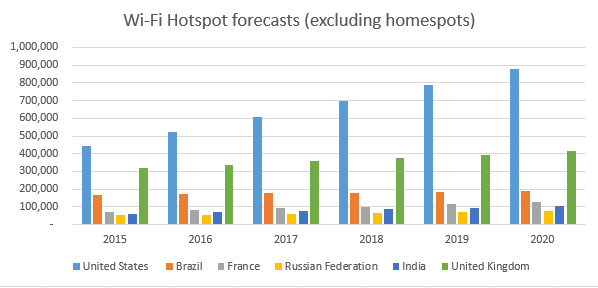There are several reasons why services delivered over fixed networks are going to face tougher competition from mobile services, ranging from orders of magnitude more mobile bandwidth to lower mobile network sunk costs to higher network utilization rates to changing end user demand.
Simply put, demand for consumer-focused mobile services now vastly outstrips demand for fixed network services.
According to the International Telecommunications Union, fixed telephone subscriptions have declined from 15.2 to 14.5 per 100 persons, globally. That abandonment of fixed network voice is occurring at the same time that mobile subscriptions have reached 98.6 percent.
To be sure, demand for fixed network Internet access grew, but slowly, in 2014. Fixed network Internet access subscriptions grew from 10.3 percent to 10.8 percent.
Also, relatively speaking, it is going to be easier to wring cost out of mobile platforms, compared to fixed platforms, in most markets.
Mobile networks cost less than fixed networks, and can be deployed and upgraded faster.
Though the pattern is by no means uniform globally, the cost of a mobile network, including spectrum purchases, is less than that of a comparable fixed network.
But mobile markets typically feature multiple mobile operators (three to five, for example) operating with their own facilities, while many fixed network markets feature only a single network operator, or possibly two, in some markets.
In addition, mobile network infrastructure costs are described in terms of costs to serve “people,” while fixed network costs are “per location.”
That makes direct comparisons somewhat more difficult. But a study of U.S infrastructure costs showed mobile or wireless networks were less costly than fixed networks when loop length requirements were 12,000 feet, for example, when the comparison was a single new mobile network and a single new fixed network.
Total investment might differ if multiple mobile networks overbuild a single fixed network. In some cases, the total cost of all the mobile networks could be higher than that of a single fixed network.
Operating costs often also are lower for mobile than fixed networks, sometimes because the fixed networks have cost structures typical of former-monopoly providers, while mobile service providers often start with lower cost structures.
Also, as customers abandon the fixed network, more of the assets are stranded, and unable to generate a financial return. Rare is the cell tower that does not serve paying customers, or enough paying customers to earn an actual profit.
To be sure, prices might not drop by 40 percent for every service, offered by every provider, in every market. Prices for fixed services might even rise, as consumers opt to buy more-expensive services running at higher speeds up to a gigabit per second in some markets, but easily to hundreds of megabits in more markets.
The analogy there is smartphone prices, which are higher than what consumers used to pay for feature phones.
Still, stranded assets and shifting demand are going to create increasing pressures for fixed network service providers. Mobile operators will not be exempt from the pricing pressures, either.
Some might already argue that many fixed network providers, and even some leading mobile providers, have business models that are going “upside down.”


